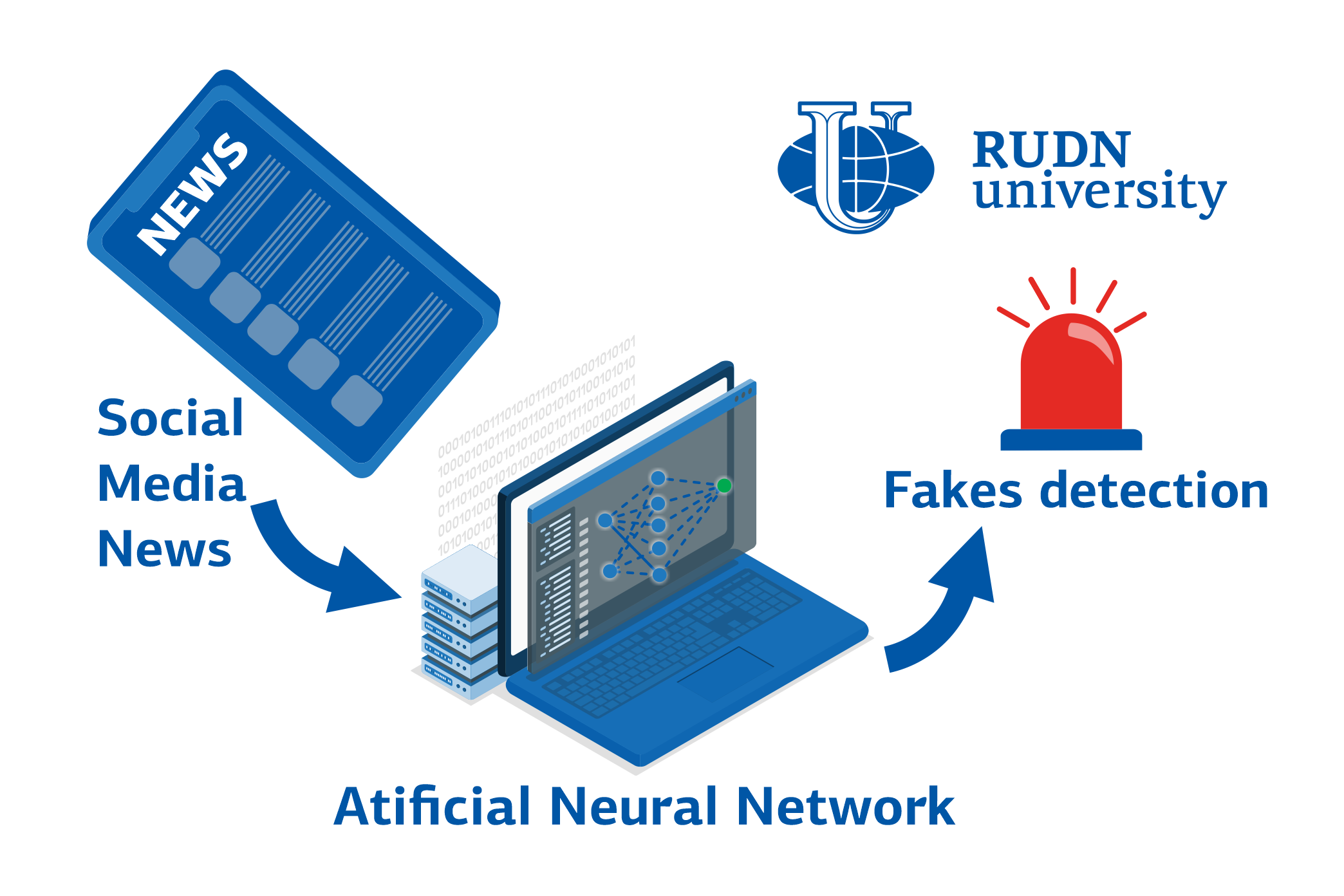RUDN mathematician in collaboration with scientists from Korea, Pakistan and Saudi Arabia, created a neural network that can detect fakes in news reports on social media. Unlike analogues, the new model takes into account more characteristics, such as post readability and user popularity. This improves the accuracy of the forecast. Results published in Applied Sciences.
On social networks, any user can post false news or rumors. The social or economic consequences of spreading such fakes can be severe. A RUDN mathematician, together with colleagues from Korea, Pakistan and Saudi Arabia, created a program that can automatically detect fakes among messages on social media.
“The accidental or malicious dissemination of misinformation on social media can have negative consequences for society. Especially in emergency situations. In social networks, users exchange information with many readers and create a large amount of new information every second. However, social media posts are not always true. We focused on the latest news rumors circulating on social media rather than longer-term fakes,” said Ammar Muthanna, PhD, Director of the Scientific Center for Modeling Wireless Networks 5G at RUDN University.
Mathematicians have proposed a simple model that is based on the Long Short Term Memory Chain Method ( LSTM ). The researchers proposed a new set of post characteristics, according to which the neural network ultimately makes a decision. Unlike the classical set of characteristics, the proposed model considers the readability of the post, reactions to it, the popularity of the user and the post itself, and other features.
Mathematicians used an open set of tweets PHEME, which contains about 6 thousand true and false user messages during 5 emergencies, terrorist attacks and disasters. All tweets in the database are marked as true or false. With the help of the new model, the mathematicians managed to increase the accuracy of detecting fakes to 76% compared to 61% for the best existing algorithm at the moment. For truthful tweets , the accuracy is even higher – 87% versus 82% for the existing algorithm.
“The characteristics we propose work better for classifying rumors. Our model is simple yet effective for detecting fakes . The approach can still be improved, this will require more stringent tests. Since there is a lot of unlabeled data available on social media, we will also create unsupervised learning models,” said Ammar Muthanna, PhD, Director of the Scientific Center for Modeling Wireless Networks 5G at RUDN University.
